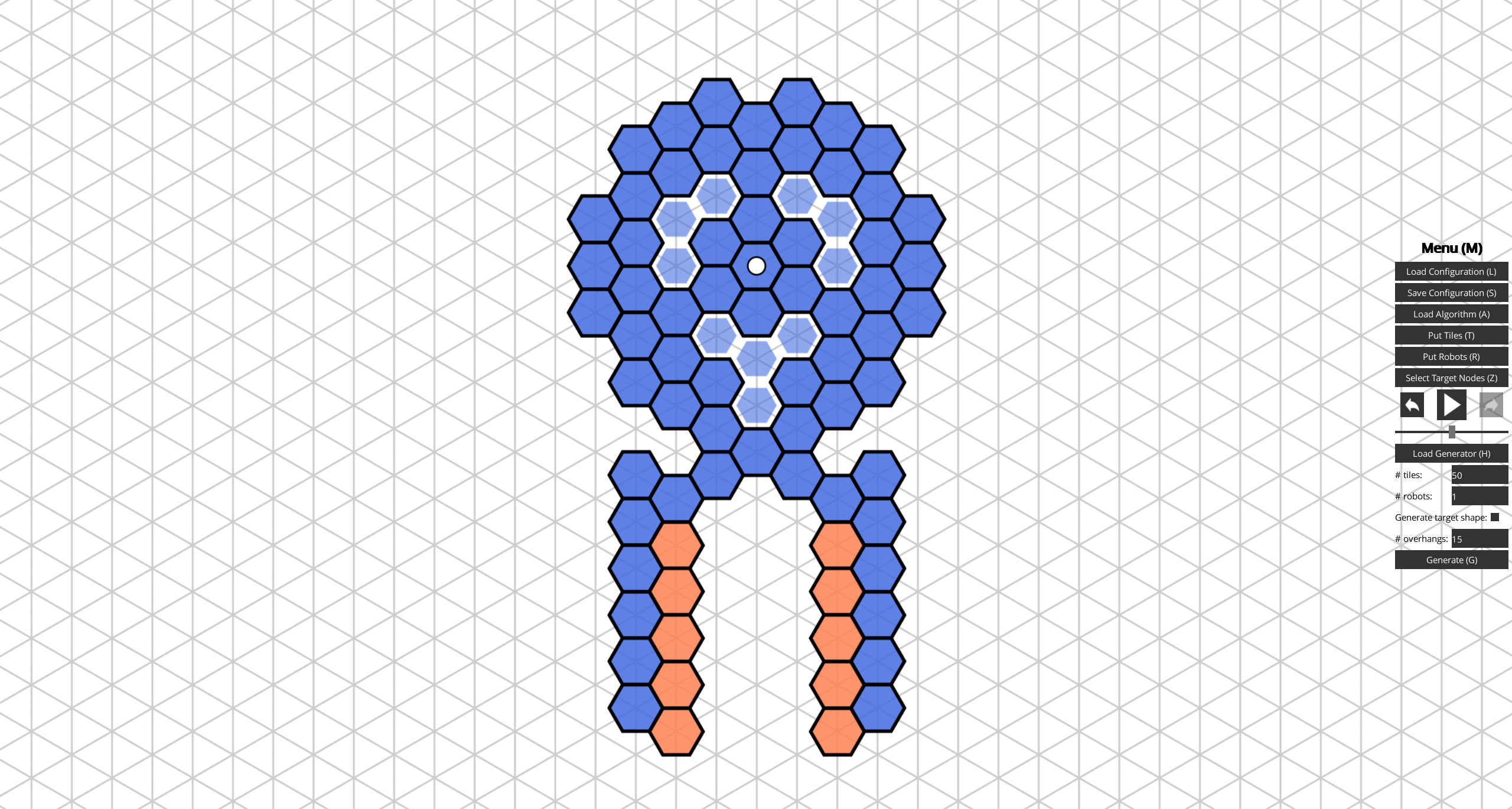HybridSim is a simulator for the hybrid model for programmable matter. If you are unfamiliar with the model, you can read up on it in chapters 6 and 7 of "Computing by Programmable Particles" by Daymude et al. [1]. I developed this program to aid with the development of hybrid model algorithms while working on my master's thesis "Shape Reconfiguration by Hybrid Programmable Matter" in the Theory of Distributed Systems research group at Paderborn University.
To be able to launch HybridSim, you need a recent installation of the Java
Runtime Environment (version 17 or newer). Download and execute the most recent
.jar file from the
Releases tab on the
right. Alternatively, you can build the executable yourself by cloning the
repository and running gradlew build. Then, you find the .jar file in the
lwjgl3/build/lib directory.
Using the appropriate buttons in the GUI, you can:
- load a configuration from
exampleConfigurations, - load an algorithm script from
exampleAlgorithms, - start the scheduler by pressing the large play button,
- place (left-click) or remove (right-click) tiles, robots, or target nodes,
- load a configuration generator script from
exampleGenerators, and - generate a configuration with the specified number of tiles, robots, and overhangs (tiles on non-target nodes).
Algorithms and configuration generators are implemented as Kotlin scripts.
Use the _Template.kts file from the
respective example directory as a starting point for writing your own scripts
which can then be loaded as stated above. It may also be helpful for you to
look at example implementations such as the script for the
triangle formation algorithm by
Gmyr et al. [2].
The simulator can also be used to empirically test algorithms in --nogui
mode. For example, to run the shape reconfiguration algorithm for simply
connected input and target shapes introduced in my thesis on 50 randomly
generated configurations with 2500 tiles, one robot, and 1000 overhangs, use
the following arguments:
--nogui
--algorithm exampleAlgorithms/ShapeReconfiguration/SC_Input_SC_Target.kts
--generator exampleGenerators/ShapeReconfiguration/SC_Input_SC_Target.kts
--num_tiles 2500 --num_robots 1 --num_overhangs 1000
--num_runs 50 --seed 2023
--output result.csv
For a list of all accepted arguments with explanations, run HybridSim with
--help.
- On MacOS, resizing the window or moving it to a different monitor may result in a crash.
[1] Joshua J. Daymude, Kristian Hinnenthal, Andréa W. Richa, Christian Scheideler (2019). Computing by Programmable Particles. In: Distributed Computing by Mobile Entities: Current Research in Moving and Computing, pages 615–681. https://doi.org/10.1007/978-3-030-11072-7_22.
[2] Robert Gmyr, Kristian Hinnenthal, Irina Kostitsyna, Fabian Kuhn, Dorian Rudolph, Christian Scheideler, Thim Strothmann (2018). Forming Tile Shapes with Simple Robots. In: DNA Computing and Molecular Programming, 24th International Conference (DNA 24), pages 122–138. https://doi.org/10.1007/978-3-030-00030-1_8.
